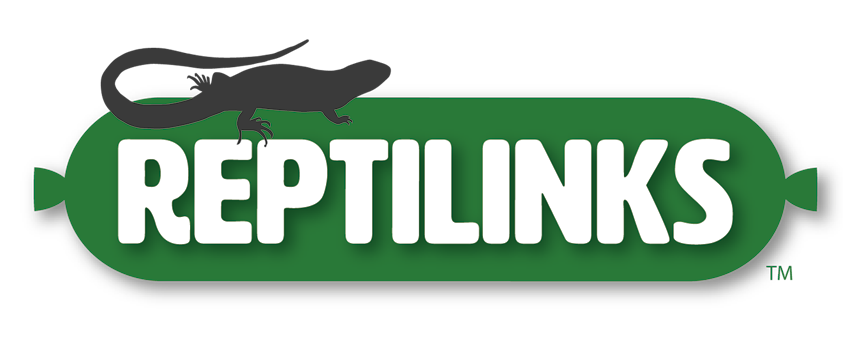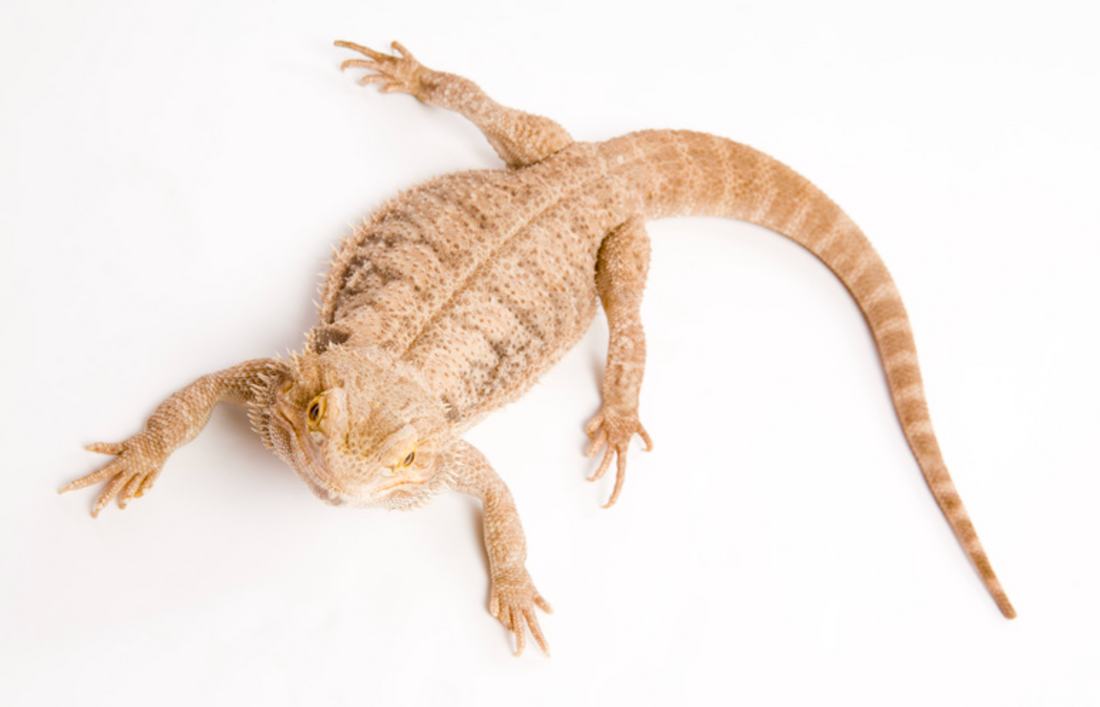The reptile hobby is gaining more momentum than ever, and veterans and novices alike are enjoying spending time with their new scaly companions. Among the reptilian choices for pet lizards, none are as popular as the bearded dragon. Beardies come in many sizes and colorations, but all feature some of the same elements that keep people addicted to this species: a friendly and inquisitive personality, simple care requirements, easy handling, and affordability of food.
Your bearded dragon relies on you to give it the nutrition, exercise, and enrichment that it needs to be happy and thrive. That’s why it’s important to do your research and learn about the ideal aspects of beardie care so that your scaly friend can live with you for as long as possible. This article covers the basics of bearded dragon care, whether you own P. vitticeps, P. barbata, or even the more diminutive Rankin’s dragon.
Basic Care Requirements for Bearded Dragons
Many types of bearded dragons come from Australia, where the ground is hot, flat, and expansive. This means that they make ample use of their legs, and they love to walk around. Providing sufficient floor space in an enclosure is paramount; an enclosure that is 4x2x2 (that is, four feet wide, two feet deep, and two feet tall) is a good minimum, though they will always appreciate more space!
Substrate
There is much debate in the reptile community about the risks of providing natural substrate to bearded dragons. Some keepers have experienced impaction (when the reptile cannot pass stool or urates) due to their beardies consuming substrate. However, in general, the recommendation for any reptile is to mimic its natural environment as much as possible. Because bearded dragons come from flat, dry terrain such as scrublands, they are often found living on sandy material.
So how do you prevent the risk of impaction? Proper care and some smart choices about sand types play a big role. Beardies who are receiving the correct hydration, temperatures, and nutrition are easily able to pass sand that they accidentally ingest. To further reduce the chances, feed in a feeding dish with a lip rather than on the floor of the enclosure.
Additionally, as keepers, it is possible to make better choices about the sand substrate itself. Compacted clay sand is identical to what beardies encounter in the wild. If this is not available, be sure to choose sand that comes in natural, variable grain sizes such as EarthMix Arid. Do not use pebbles, gravel, silica sands, and especially calcium sand. These particles are very fine and easy to ingest, and they can also irritate your beardie’s eyes and ear membranes.
Fill the enclosure with lots of enrichment items, such as rocks, slates, and bricks. Not only does this provide exercise and engagement, but it also reduces the overall square footage that is made of sand, further cutting down on impaction risk.
Humidity
The relative humidity levels that bearded dragons experience in the wild tends to range between 30% and 40%. Thankfully, this is usually simple to replicate in captivity, as humans also feel most comfortable within these ranges, and homes are built to facilitate keeping the humidity near this target. Use of sand and non-absorbent substrate further simplifies the challenge of balancing humidity in the enclosure. Use a hygrometer to check the humidity from time to time, as levels approaching 50% or above over a sustained time frame can cause health issues like respiratory infections for your beardie.
Temperatures
Alongside the question of humidity comes some consideration of temperature. Beardies sit out in the Australian sun during the day—which means they’re capable of handling a real scorcher. In fact, studies by reptile scientists have shown that the ideal internal temperature for a bearded dragon is 97.3 degrees Fahrenheit; that’s when they stop basking because they’re exactly where they need to be temperature-wise. In order to achieve this, your enclosure should feature a basking spot with a focal point that reaches between 108 and 113 degrees. Ideally, offer a larger basking location that allows the beardie to move closer or further away from the hottest point so that they can regulate temperature on their own. Aim for a cool side in the mid to high 70s.
Lighting & UV
A clear day in the Australian scrubland is hot, bright, and scorching under the sun’s rays. This impacts what lighting your beardie will naturally benefit from. Halogen bulbs can produce both bright light and sufficient heat with no further equipment besides a light dome. Double check the wattage capacity of the dome to make sure that it can handle the wattage of the lights you plan to use! Sometimes, it’s better to use a cluster of weaker lights than one very powerful light if you’re having a hard time targeting that ideal temperature. In the average enclosure, a 90w bulb usually does the trick.
Bearded dragons spend a lot of time in the sun, so UV bulbs are essential. This allows them to convert the minerals they get from their food into building blocks like vitamin D and calcium. Arcadia’s T5 high output series works well for beardies; place the UV lamp near the heat lamp, as the heat from basking assists with this synthesis.
What to Avoid
There are a lot of creative liberties you can take when setting up, designing, and decorating your bearded dragon’s tank. However, some things are best avoided no matter what; one of them is spotlight lighting. When selecting the type of lighting for your beardie, make sure that you choose flood lamps instead of spot lamps. Spotlights create a very hot, focused point, which can burn your lizard. Flood lamps spread this illumination out, providing a more effective and safe heat gradient.
It is also best not to use heat rocks. While beardies enjoy sitting on hot rocks, heat rocks do not come with thermostats—meaning they can (and often do) get hotter than they’re supposed to. This could burn your dragon. Instead, use stones or a slate tile underneath the basking spot and allow it to warm up naturally.
Feeding a Bearded Dragon
The ideal diet for a bearded dragon consists of a variety of insects, vegetables, and fruits, because this is what they forage for in the wild. Bearded dragons are omnivorous reptiles, meaning they eat both plant and animal matter. Here's a breakdown of the key components of their diet:
- Insects: Insects should make up a significant portion of a bearded dragon's diet, especially when they’re young. Appropriate insects include crickets, mealworms, waxworms, superworms, and small roaches. Dubia are also an excellent choice, as are black soldier fly larvae; avoid feeding superworms and waxworms too often, as they can be fatty and provide more calories than your beardie burns. Remember to gut load and dust your insects!
- Vegetables: A variety of leafy greens and vegetables should be provided daily. Suitable options include collard greens, mustard greens, dandelion greens, kale, turnip greens, and squash. Sweet potatoes, radishes, and cauliflower can be fed sparingly or skipped altogether, but be sure to avoid rhubarb and spinach.
- Fruits: Fruits can be offered occasionally as a treat or to entice a picky eater. Some suitable fruits include apples, strawberries, blueberries, and melons.
Many Reptilinks products are suitable for beardies, making feeding simple. In fact, so many beardies enjoy Reptilinks that there is a special package specifically catered toward them: the 25/25/50 Omnivore Blend + Insects. For those who prefer to feed insects on their own, the 50/50 Omnivore blend is also a great option. Most beardies will easily be able to enjoy 8-12g Reptilinks. To check out a more detailed list of the things beardies should—and shouldn’t—be eating, check out this resource.
Identifying Obesity in Bearded Dragons
Beardies love to be active, and in the wild, they will regularly make treks longer than 100 yards (that’s an entire American football field) with no problems—which is a long way to go when your steps are only a few inches apart! In captivity, it can be harder to regulate their weight due to less exercise and a tendency toward feeding too often or too much. Adult beardies should eat once per day at most, though some are content to go more than a day between feedings.
If you’re worried that your bearded dragon is carrying too much weight, there are signs to look for. A very large jowl that protrudes at all times is a common sign, as is a thick tail base. Beardies that are overweight may also have a ring separating their wrist from their hand as fat collects at the joint. Behind their arms, they may begin to develop fat pockets. You should always be able to feel the spine and ribs of your beardie—if you can’t, they may benefit from fewer calorie-dense foods or an increase in duration between meals.
Set Your Beardie Up for Success With Good Care and a Great Diet
You can enjoy the company of your bearded dragon for a decade or more by putting in the effort to feed, house, and care for them properly. Reptilinks makes the nutrition side simple by providing a balanced omnivore diet. From there, you have all the freedom in the world to create engaging and captivating landscapes in which your beardie can climb, dig, and explore!

